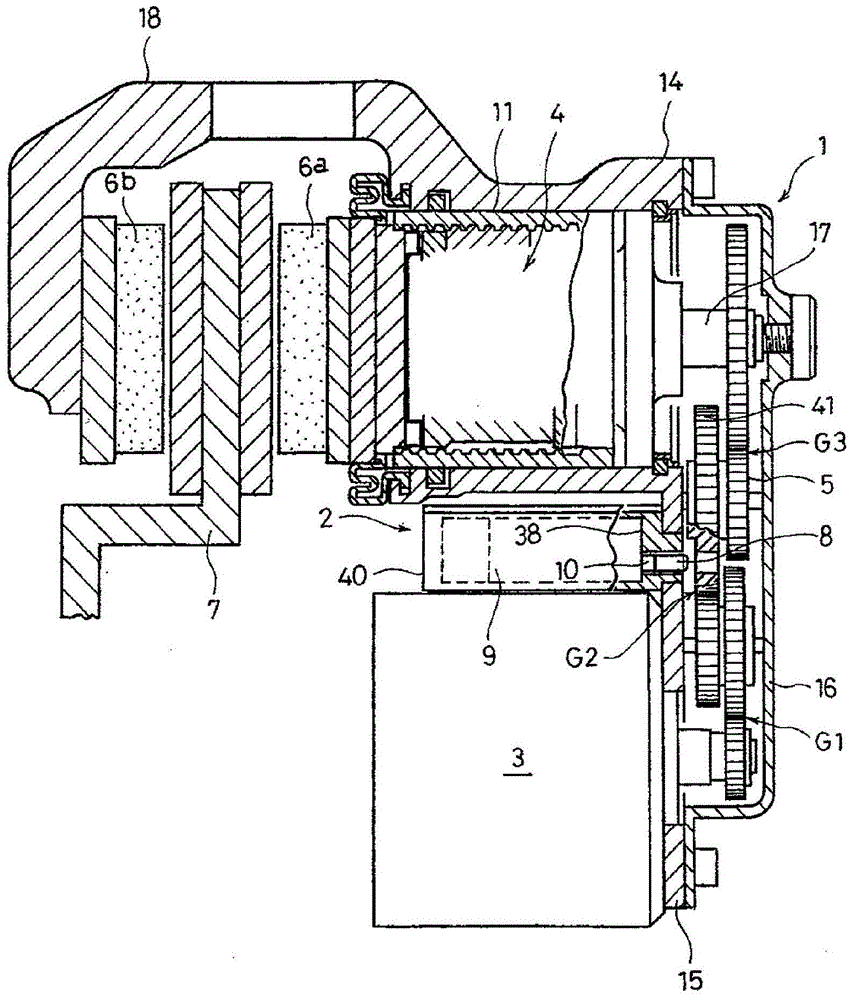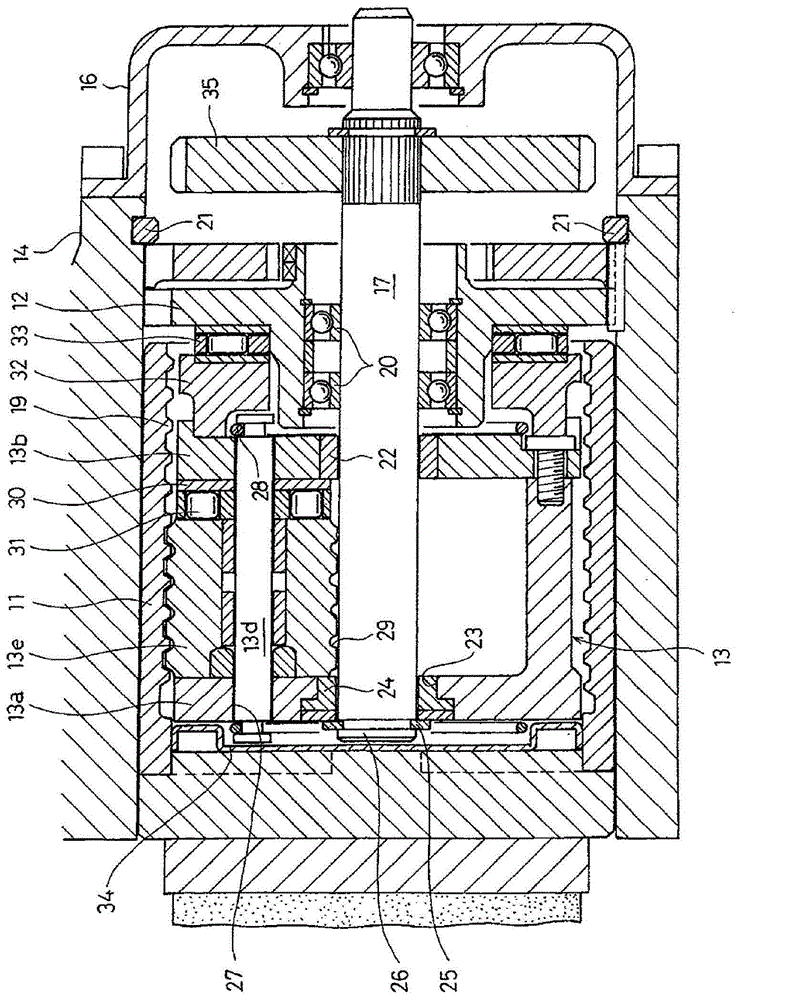Electric parking brake device
A brake device, electric technology, applied in the direction of transmission device, electric device, electromagnetic measuring device, etc., can solve the problem of loss and other problems, achieve the effect of reducing cost, realizing size and avoiding accidents
- Summary
- Abstract
- Description
- Claims
- Application Information
AI Technical Summary
Problems solved by technology
Method used
Image
Examples
Embodiment 1
[0112] The first embodiment relates to temperature rise of the solenoid 9 in addition to the above-mentioned operation and effect, and describes how the accuracy of estimating the position and displacement of the plunger 10 can be improved by compensating for a decrease in the magnetic field caused by the temperature rise.
[0113] That is, the solenoid 9 uses a copper wire for the coil 37 . At this copper wire there is a DC resistance which has a positive temperature coefficient. Therefore, when the DC resistance of the coil 37 increases due to an increase in temperature (including ambient temperature), the excitation current decreases, and the magnetomotive force decreases.
[0114] here, in Figure 6 Since a current control circuit is used for driving the solenoid 9, control is performed so that a constant current is supplied even if the temperature changes.
[0115] However, in general, when normalizing the relationship between the DC resistance and the temperature coeff...
Embodiment 2
[0129] In this second embodiment, in addition to the above-mentioned operation and effect, the state of the parking brake device is periodically confirmed (inspected) to improve safety.
[0130] That is, the position of the plunger 10 of the solenoid 9 is estimated and confirmed when the parking brake device is OFF and when the parking brake device is operating.
[0131] The case where the parking brake device is disconnected refers to the case where the brake pedal is operated to actuate the main brake (foot brake). 42 is separated and confirmed, so that there is no hindrance to the action of the main brake. Therefore, this confirmation is always performed by sequentially estimating the position of the plunger 10 of the solenoid 9 every predetermined period of time shorter than the operation period of the solenoid 9 using the methods of the embodiment and Example 1. FIG. Accordingly, malfunction of the plunger 10 can be detected.
[0132] In this way, if Figure 6 As shown, ...
Embodiment 3
[0138] The third embodiment is used to compensate for the estimation of the position of the plunger 10 when a lateral force is applied to the vehicle body, that is, a parallel force is applied to the axle connecting the left and right wheels, in addition to the above-mentioned effects.
[0139] In this case, if figure 1 As shown, the plunger 10 of the solenoid 9 is perpendicular to the axle-mounted brake disc 7 and is arranged parallel to the axle. Therefore, when a lateral force is applied with respect to the vehicle body, a force in the advancing and retreating direction is applied to the plunger 10 , which may cause an error in the estimated position.
[0140] In order to solve the above problems, such as Figure 6 As shown, the vehicle is provided with an acceleration sensor 61 for detecting lateral acceleration. Then, when the lateral acceleration detected by the sensor 61 is detected to be a value greater than a certain value, in other words, when the plunger 10 reache...
PUM
 Login to View More
Login to View More Abstract
Description
Claims
Application Information
 Login to View More
Login to View More - R&D
- Intellectual Property
- Life Sciences
- Materials
- Tech Scout
- Unparalleled Data Quality
- Higher Quality Content
- 60% Fewer Hallucinations
Browse by: Latest US Patents, China's latest patents, Technical Efficacy Thesaurus, Application Domain, Technology Topic, Popular Technical Reports.
© 2025 PatSnap. All rights reserved.Legal|Privacy policy|Modern Slavery Act Transparency Statement|Sitemap|About US| Contact US: help@patsnap.com



